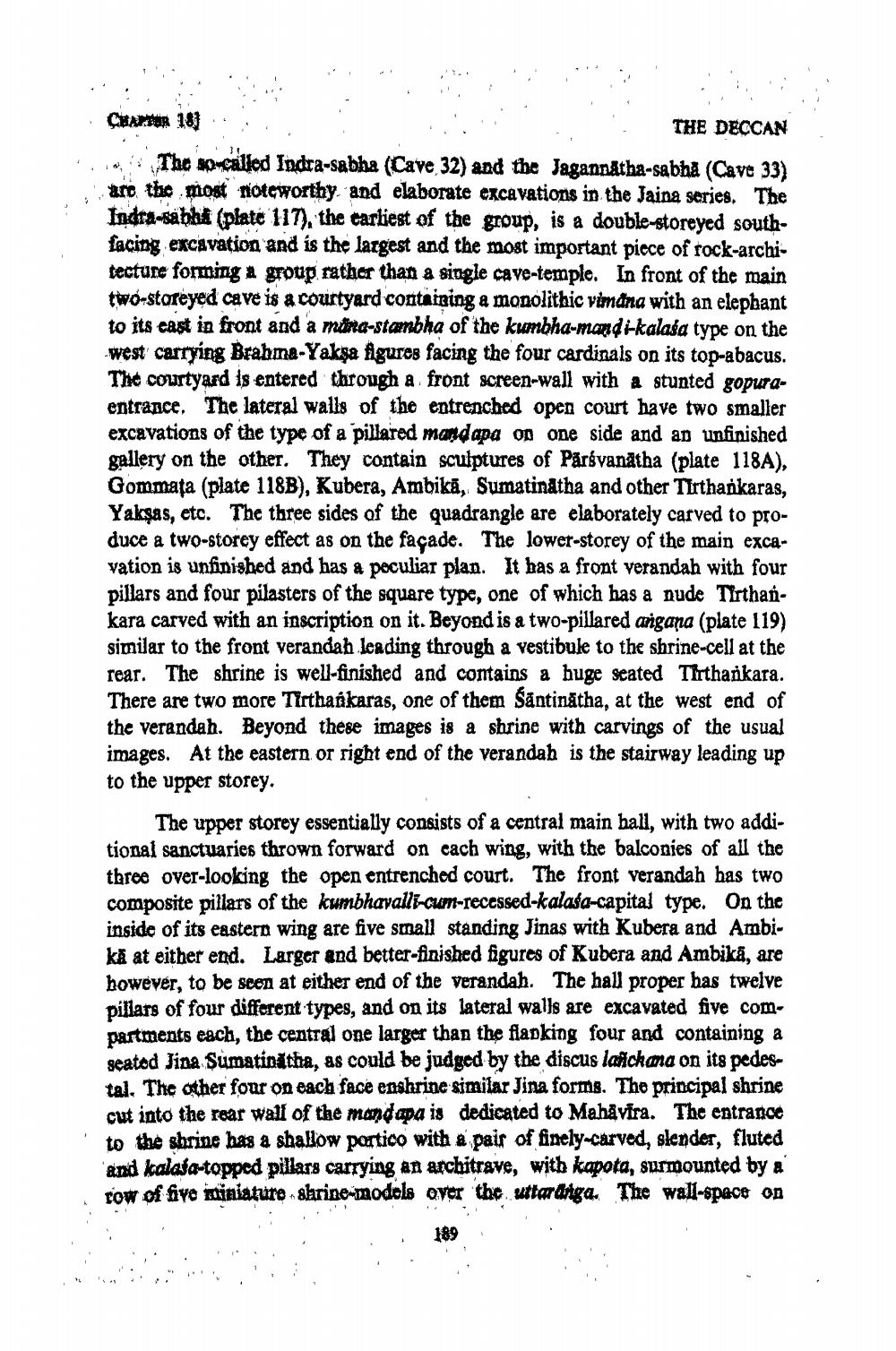________________
THE DECCAN 1.1 The so-called Indra-sabha (Cave 32) and the Jagannatha-sabha (Cave 33)
and the most noteworthy and elaborate excavations in the Jaina series. The Indra-sabha (plate 117), the cartiest of the group, is a double-storeyed southfacing excavation and is the largest and the most important piece of rock-architecture forming a group rather than a single cave-temple. In front of the main two-storeyed cave is a courtyard containing a monolithic vimana with an elephant to its cast in front and a mina-stambha of the kumbha-mand ikalaša type on the -west carrying Brahma-Yakşa figures facing the four cardinals on its top-abacus.
The courtyard is entered through a front screen-wall with a stunted gopuraentrance. The lateral walls of the entrenched open court have two smaller excavations of the type of a pillared mand apa on one side and an unfinished gallery on the other. They contain sculptures of Pårsvanātha (plate 118A), Gommata (plate 118B), Kubera, Ambikā, Sumatinatha and other Tirthankaras, Yakşas, etc. The three sides of the quadrangle are elaborately carved to produce a two-storey effect as on the façade. The lower-storey of the main excavation is unfinished and has a peculiar plan. It has a front verandah with four pillars and four pilasters of the square type, one of which has a nude Tirthankara carved with an inscription on it. Beyond is a two-pillared argana (plate 119) similar to the front verandah leading through a vestibule to the shrine-cell at the rear. The shrine is well-finished and contains a huge seated Tirtharkara. There are two more Tirthankaras, one of them Säntinātha, at the west end of the verandah. Beyond these images is a shrine with carvings of the usual images. At the eastern or right end of the verandah is the stairway leading up to the upper storey.
The upper storey essentially consists of a central main ball, with two additional sanctuaries thrown forward on cach wing, with the balconies of all the three over-looking the open entrenched court. The front verandah has two composite pillars of the kumbhavalli-cum-recessed-kalasa-capital type. On the inside of its eastern wing are five small standing Jinas with Kubera and Ambika at either end. Larger and better-finished figures of Kubera and Ambikä, are however, to be seen at either end of the verandah. The hall proper has twelve pillars of four different types, and on its lateral walls are excavated five compartments each, the central one larger than the flapking four and containing a seated Jina Sumatinitha, as could be judged by the discus lafickana on its pedestal. The other four on each face enshrine similar Jina forms. The principal shrine cut into the rear wall of the mand apa is dedicated to Mahåvira. The entrance to the shrine has a shallow portico with a pair of finely-carved, slender, fluted and kalasa-topped pillars carrying an architrave, with kapota, surmounted by a row of five miniature shrine-models over the uttararga. The wall-space on




